Hygroscopic Salts or Salt Dampness
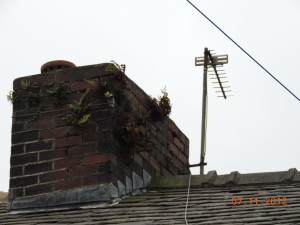 Firstly what is hygroscopic plaster?
Firstly what is hygroscopic plaster?
One of the main causes of salt dampness is the ‘roof garden’. Weed within a chimneystack is a guaranteed bet that due to the long term water ingress the internal wall will be affected by salt dampness, and the chimney structure will require Rebuilding, more often than not a general builder, will simply scrape out the weed, and repoint. A few months later, the weed will be back and the internal wall will look like the examples below.
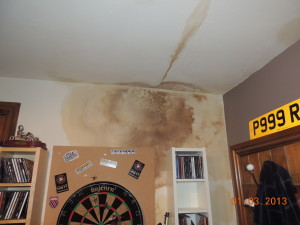 Salt dampness ‘The movement of hygroscopic organic salts into the plaster surface’ this results in staining, and persistent dampness of the applied plaster, due to these salts constantly absorbing moisture from the atmosphere.
Salt dampness ‘The movement of hygroscopic organic salts into the plaster surface’ this results in staining, and persistent dampness of the applied plaster, due to these salts constantly absorbing moisture from the atmosphere.
If not corrected the plaster will turn, deliquescent state which means they are dissolved within the moisture they have absorbed from the atmosphere, this becomes more prevalent where there is an increased moisture source as in this case by high relativity levels (Condensation).
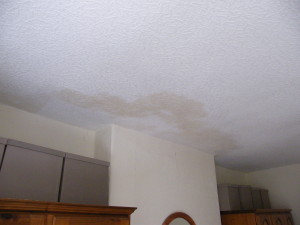 A very crude ‘taste test’ of the salts can be undertaken by touching the wall surface and liking your finger this will be characteristically bitter, indicating the presence of salts, unless correct remedial applications are undertaken, to prevent the water ingress and control the movement of moisture and the required remedial works, the plaster will continue to degrade and eventually fall away.
A very crude ‘taste test’ of the salts can be undertaken by touching the wall surface and liking your finger this will be characteristically bitter, indicating the presence of salts, unless correct remedial applications are undertaken, to prevent the water ingress and control the movement of moisture and the required remedial works, the plaster will continue to degrade and eventually fall away.
dampness-through-dry-lining-to-fireplace
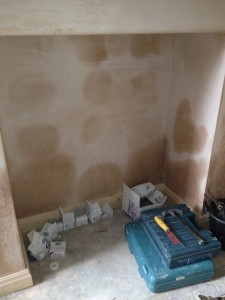 The hygroscopic salts can migrate through capillary action into other areas some distance from the source of the dampness.
The hygroscopic salts can migrate through capillary action into other areas some distance from the source of the dampness.
It is of the up most importance that the correct remedial works are undertaken, to install the correct remedial systems. In the image above the contractor simply replastered the chimneybreast and installed standard plasterboard to the ceiling, six month earlier.
Dry lining
The installed dry lining in the image to the left, by an unqualified contractor who undertook a property refurbishment, this works were only completed a week, before and the salts are striking through the installed plasterboards, note he hasn’t even had time to remove his tools and post his bill.
BS 6576: 2005+ A1 2012 SECTION 10.4 clearly states , dry lining systems that involve directly bonding panels to the walls using gypsum-based bonding plasters or certain other adhesives, should not be used in this type of application. These areas being walls which are or have been affected by dampness or hygroscopic salts.
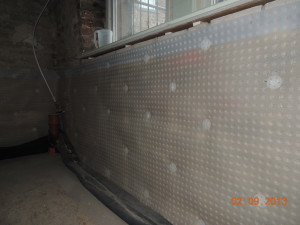 Plaster membranes are one of the systems which we install to prevent the transfer of residual moisture or salting into the applied plaster or dry lined surface, these provide full protection and improve the thermal value of the wall, so reducing the possibility of condensation. This is one of the systems we install as professionals and recommended within BS 6576: 2005+ A1 2012 SECTION 10.4.
Plaster membranes are one of the systems which we install to prevent the transfer of residual moisture or salting into the applied plaster or dry lined surface, these provide full protection and improve the thermal value of the wall, so reducing the possibility of condensation. This is one of the systems we install as professionals and recommended within BS 6576: 2005+ A1 2012 SECTION 10.4.
If you have any questions please call us on 0161 633 9860 and we will be happy to answer any of your questions or make arrangements to undertaken an inspection, to ensure your property is structurally is both sound and dry.
Olympic Construction are Property Care Association Members
Property remedial treatments and surveys in Oldham, Manchester, Rochdale, Stockport, Cheshire and throughout the North West. For advice or to arrange a survey, give us a call today!


